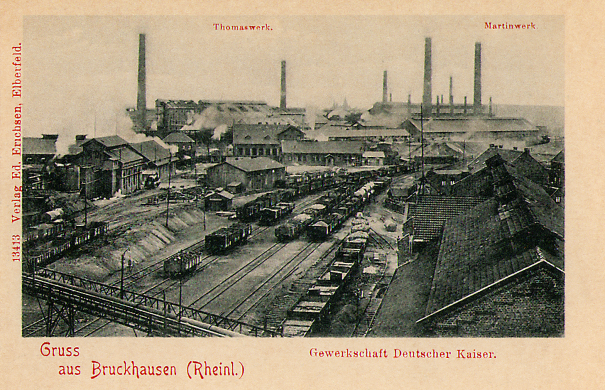Thyssen - Expansion to a group

In 1895 August Thyssen had a basic Bessemer smelting plant built in Bruckhausen to allow him to produce steel from high-phosphorus ores independently of the scrap market, picture postcard ca. 1900.
In the first decade of the 20th century, individual holding functions of the firm of Thyssen & Co., founded by August Thyssen in Mülheim an der Ruhr in 1871, are gradually transferred to Gewerkschaft Deutscher Kaiser, where his son Fritz (1873 - 1951) is elected to the mining board in 1897. The internationalization of the group in the early part of the 20th century is brought to an abrupt halt by the onset of the First World War. After an initial sharp decline, production is then expanded to support the war effort, followed in the immediate post-war period by fear of socialization and in 1923 the French occupation of the Ruhr region. Although August Thyssen loses numerous foreign interests after the First World War, in Germany his company is still largely intact. The potential for rationalization and market opportunities convince him to agree in principle to the establishment of a new group in 1925 comprising all iron and steel companies in the Ruhr with the exception of Hoesch, Gutehoffnungshütte, Mannesmann, Klöckner and Krupp.
/thyssenkrupp_logo_claim_d.svg)